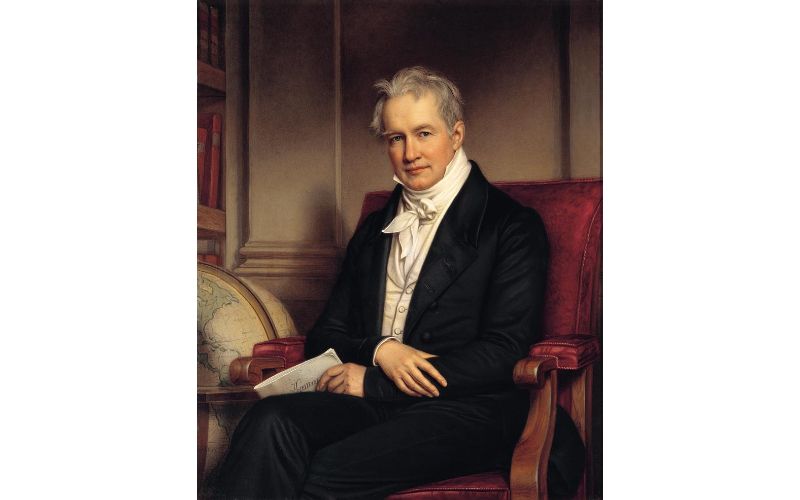100 Heroes: Alexander von Humboldt
The gay man who shaped the field of botanical geography.

Alexander von Humboldt was a Prussian polymath, geographer, naturalist, explorer, and influential proponent of Romantic philosophy and science.
Humboldt’s quantitative work on botanical geography laid the foundation for the field of biogeography. Humboldt’s advocacy of long-term systematic geophysical measurement laid the foundation for modern geomagnetic and meteorological monitoring.
Between 1799 and 1804, Humboldt travelled extensively in the Americas, exploring and describing them for the first time from a modern scientific point of view. His description of the journey was written up and published in an enormous set of volumes over 21 years. Humboldt was one of the first people to propose that the lands bordering the Atlantic Ocean were once joined (South America and Africa in particular). Humboldt resurrected the use of the word cosmos from the ancient Greek and assigned it to his multivolume treatise, Kosmos, in which he sought to unify diverse branches of scientific knowledge and culture. This important work also motivated a holistic perception of the universe as one interacting entity. He was the first person to describe the phenomenon and cause of human-induced climate change, in 1800 and again in 1831, based on observations generated during his travels.
Early life and education
Alexander von Humboldt was born in 1769 in Berlin in Prussia.
His father was a military officer, and the family were well-connected.
While studying at the university in Gottingen, he met Georg Forster, a naturalist who had been with Captain James Cook on his second voyage. Humboldt traveled with Forster in Europe. The two traveled to England, Humboldt’s first sea voyage, the Netherlands, and France. In England, he met Sir Joseph Banks, president of the Royal Society, who had traveled with Captain Cook; Banks showed Humboldt his huge herbarium, with specimens of the South Sea tropics. The scientific friendship between Banks and Humboldt lasted until Banks’s death in 1820, and the two shared botanical specimens for study. Banks also mobilized his scientific contacts in later years to aid Humboldt’s work.
Humboldt devoted his studies and his passion for travelling to prepare himself as a scientific explorer.
Personal life
Much of Humboldt’s private life remains a mystery because he destroyed his private letters.
Humboldt never married. He had many strong male friendships, and at times had romances with men.
As a student he became infatuated with Wilhelm Gabriel Wegener, a theology student, penning a succession of letters expressing his “fervent love”. At the age of 25, he met Reinhardt von Haeften, a 21-year-old lieutenant, with whom he lived and travelled for two years, and to whom he wrote in 1794: “I only live through you, my good precious Reinhardt”. When von Haeften became engaged, Humboldt begged to remain living with him and his wife: “Even if you must refuse me, treat me coldly with disdain, I should still want to be with you… the love I have for you is not just friendship or brotherly love, it is veneration”.
A traveling companion in the Americas for five years was Aimé Bonpland, and in Quito in 1802 he met the Ecuadorian aristocrat Don Carlos Montúfar, who traveled with Humboldt to Europe and lived with him. In France, Humboldt traveled and lived with the physicist and balloonist Joseph Louis Gay Lussac. Later he had a deep friendship with the married French astronomer François Arago, whom he met daily for 15 years.
A pious travelling companion, Francisco José de Caldas, accused him of frequenting houses in Quito where “impure love reigned”, of making friends with “obscene dissolute youths”, of giving vent to “shameful passions of his heart”, and dropping him to travel with Bonpland and Montúfar.
In his later years, Humboldt lived in Berlin with his valet, Seifert. Humboldt left his entire estate to Seifert.
Humboldt died in 1859, aged 89.